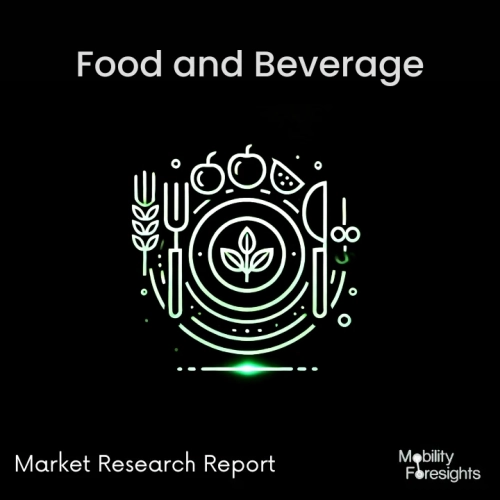Africa Food Hydrocolloids Market
Introduction
TheAfrica Food Hydrocolloids Marketfocuses on the production, application, and demand for hydrocolloids used as thickening, stabilizing, emulsifying, and gelling agents in food and beverage products. Food hydrocolloids are derived from natural sources such as plants, seaweed, and microbial fermentation and play a crucial role in enhancing texture, moisture retention, and shelf life in processed foods.
Key segments in the food hydrocolloids market include:
- Starch and Modified Starches: Used as thickening and stabilizing agents in soups, sauces, and bakery products.
- Gelatin and Pectin: Essential for gelling applications in jams, jellies, confectionery, and dairy products.
- Guar Gum and Locust Bean Gum: Commonly used in dairy, bakery, and frozen food products for viscosity and stability.
- Xanthan Gum and Carrageenan: Widely utilized in sauces, dressings, and dairy alternatives for emulsification and mouthfeel enhancement.
- Agar-Agar and Alginate: Extracted from seaweed, used in desserts, dairy, and meat products for texture and stability.
- Cellulose Derivatives (CMC, MCC): Found in processed foods for their fat-replacing and moisture-retention properties.
With growing demand for natural and clean-label ingredients, hydrocolloids are gaining popularity as functional food additives that improve product consistency and appeal.
Growth Drivers for the Africa Food Hydrocolloids Market
Several factors are fueling the expansion of the food hydrocolloids market inAfrica, including consumer preferences for clean-label foods, advancements in food processing, and increasing demand for plant-based and functional foods.
- Rising Demand for Processed and Convenience Foods:Hydrocolloids are essential for improving texture, stability, and moisture retention in processed food products.
- Growing Popularity of Plant-Based and Dairy-Free Alternatives:Plant-based hydrocolloids such as pectin and carrageenan are widely used in vegan and lactose-free food products.
- Advancements in Food Formulation and Product Innovation:Food manufacturers are using hydrocolloids to enhance the sensory experience and improve product consistency.
- Health and Wellness Trends Favoring Natural Ingredients:Consumers are shifting towards natural, clean-label hydrocolloids derived from seaweed, plants, and fermentation sources.
- Expanding Applications in Bakery, Dairy, and Confectionery Industries:The increasing demand for hydrocolloids in baked goods, dairy products, and confections is driving market growth.
Africa Food Hydrocolloids Market Trends
The food hydrocolloids market inAfricais evolving with key trends shaping ingredient innovation, formulation techniques, and sustainability practices.
- Shift Towards Clean-Label and Organic Hydrocolloids:Natural hydrocolloids are replacing synthetic additives to meet consumer demand for transparency and health-conscious formulations.
- Increasing Use of Hydrocolloids in Gluten-Free and Low-Fat Products:Hydrocolloids enhance texture and binding properties in gluten-free bakery products and low-fat dairy alternatives.
- Development of Functional and Nutraceutical Hydrocolloids:Prebiotic hydrocolloids such as inulin are gaining traction in gut-health-promoting food formulations.
- Sustainability Initiatives and Eco-Friendly Sourcing:Manufacturers are focusing on sustainable sourcing of hydrocolloids from seaweed, plant extracts, and microbial fermentation.
- Expansion of Hydrocolloids in Plant-Based Meat and Alternative Proteins:Hydrocolloids play a crucial role in mimicking meat-like textures and improving mouthfeel in plant-based protein products.
Challenges in the Africa Food Hydrocolloids Market
Despite strong market growth, the food hydrocolloids industry inAfricafaces several challenges related to cost, supply chain stability, and regulatory compliance.
- Fluctuations in Raw Material Availability and Prices:Variability in seaweed harvesting and plant-based raw material supply can impact production costs and market stability.
- Regulatory Challenges and Labeling Requirements:Strict regulations on food additives and clean-label claims require manufacturers to comply with evolving food safety standards.
- Consumer Perception of Additives in Processed Foods:Despite being natural, some hydrocolloids face skepticism from consumers concerned about food additives.
- Technological and Processing Limitations:Achieving desired functionalities such as stability, solubility, and gelling consistency requires continuous innovation in formulation.
- Competition from Alternative Food Texturizers:Starches, proteins, and emulsifiers may compete with hydrocolloids in certain food applications, influencing market dynamics.
Africa Food Hydrocolloids Market Segmentation and Applications
TheAfrica Food Hydrocolloids Marketserves a broad range of food processing industries, offering customized solutions for improved food texture, stability, and shelf life.
By Type:
- Starch and Modified Starches
- Gelatin and Pectin
- Guar Gum and Locust Bean Gum
- Xanthan Gum and Carrageenan
- Agar-Agar and Alginate
- Cellulose Derivatives (CMC, MCC)
By End-User Industry:
- Bakery and Confectionery (Dough Improvers, Gelling Agents, Stabilizers)
- Dairy and Frozen Desserts (Ice Cream Stabilizers, Dairy-Free Alternatives)
- Beverages (Emulsifiers in Juices, Protein Beverages, Carbonated Drinks)
- Meat, Poultry, and Seafood (Texture Enhancers, Moisture Retention Agents)
- Plant-Based and Functional Foods (Meat Alternatives, Nutraceutical Products)
By Functionality:
- Thickening and Stabilizing Agents
- Gelling and Emulsifying Agents
- Moisture Retention and Shelf-Life Enhancers
- Fat Replacers and Mouthfeel Improvers
Africa Food Hydrocolloids Market Size and Forecast
TheAfrica Food Hydrocolloids Marketis projected to reach$XX billionby2030, growing at aXX% CAGR, driven by increasing demand for clean-label food ingredients, plant-based formulations, and texture-enhancing solutions.
- Natural and Plant-Based Hydrocolloids: Expected to dominate as consumer preference shifts toward sustainable and organic food additives.
- Functional Food and Nutraceutical Applications: Anticipated to see rapid growth as hydrocolloids contribute to digestive health and low-calorie food options.
- Emerging Markets: Expansion opportunities in developing regions ofAfrica, supported by food processing industry growth and regulatory support for clean-label ingredients.
Despite challenges such as raw material fluctuations and regulatory constraints, theAfrica Food Hydrocolloids Marketis poised for substantial growth, with continuous innovations in sustainable sourcing, functional food formulations, and clean-label solutions shaping the future of food texturizers.
Other Related Reports of Africa Food Hydrocolloids Market

